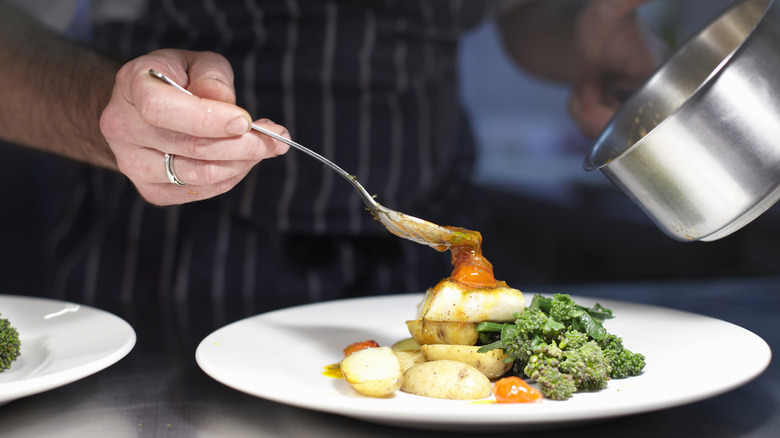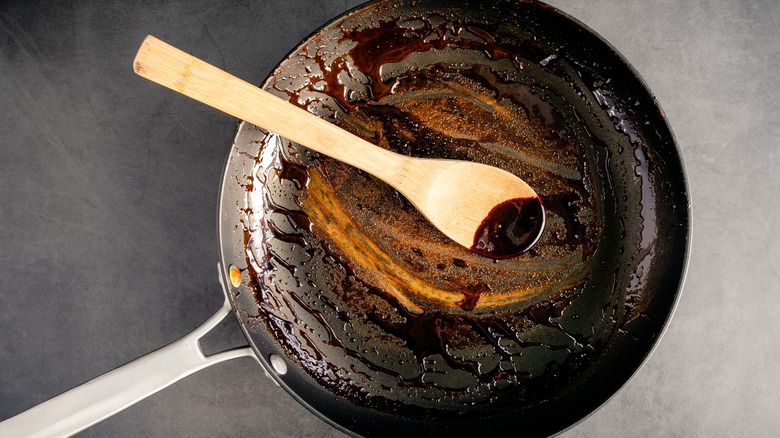Why The Size Of Your Pan Matters For A Reduction
According to Better Homes & Gardens, to reduce is to boil a liquid at high heat so that water evaporation occurs. This decreases the volume of the mixture and concentrates its flavors for making a sauce, a base for a sauce, or a sweet glaze if incorporating sugar. Some popular sauces that require reductions include balsamic glaze, demi-glace, roux-based gravy, wine sauce, and even stock (via RecipeTips.com). A sure sign that a stock was reduced properly is that it develops a jelly-like consistency when chilled. This is because the longer the bones simmer in the stock, the more gelatin gets extracted.
When working with a reduction, it takes patience and a good eye to know when to remove the pot from the heat. It's important to remember the initial volume so that you can tell how much of the liquid you want to reduce. Another critical component many overlook is using the correct size pot or pan. A proper vessel will help you gauge how long the reduction should simmer so you finish with a sauce that looks just like the picture in the recipe you're following.
The rate of evaporation determines cook time
According to Better Homes & Gardens, using the pot or pan that the recipe calls for when reducing liquids is a huge must, as the surface area of the pan affects how much liquid is exposed to oxygen, yielding a quicker rate of evaporation for larger pots or pans, and a slower rate of evaporation for smaller pots or pans. Most recipes will say the size of pot or pan they recommend, the temperature the burner should be on, and how long it should simmer. This information is essential for those attempting a specific recipe for the first time.
The Spruce Eats states that, in general, a taller, narrower pan is better than a wide, shallow one because a taller pan allows you to judge better how much of your liquid has reduced, especially when a recipe calls for you to cook it until it's an inch deep. If you cannot correctly assess the change in volume of the reduction, you will not see how quickly evaporation is occurring, and the chances that you will scorch your reduction are higher. Also, a taller, narrower pot is much easier to handle when transporting your liquid into another dish because many having easy-pour spouts built into the rim.

